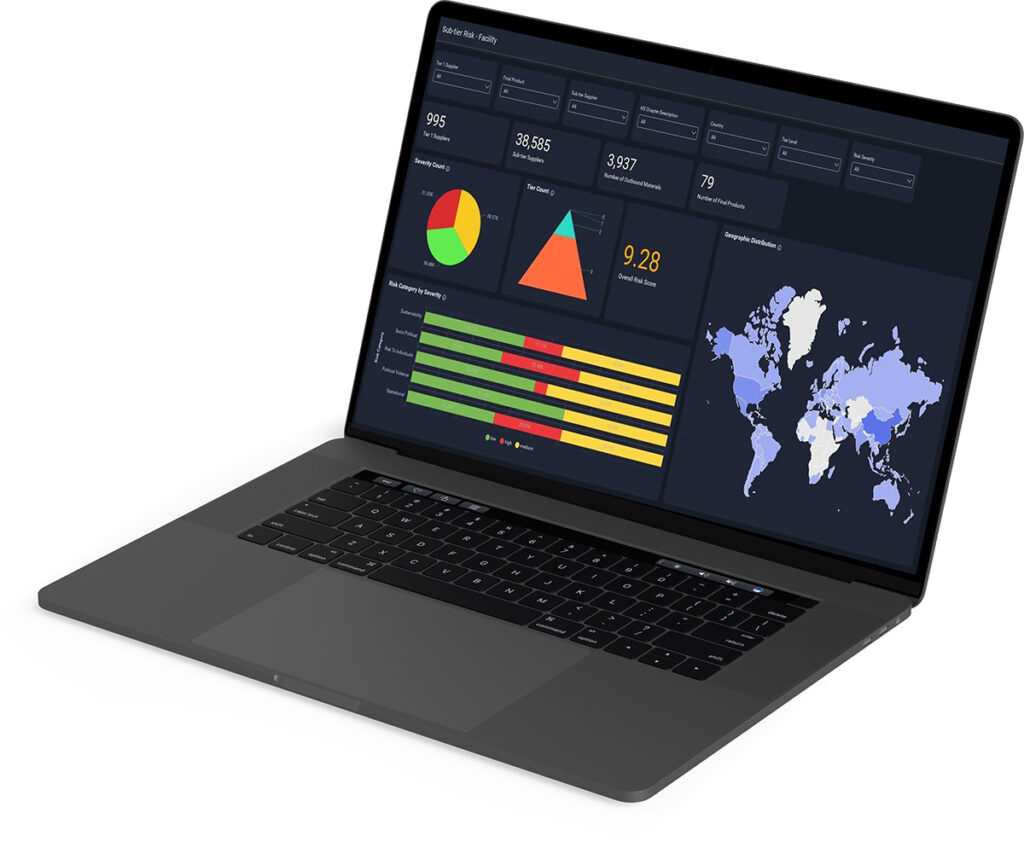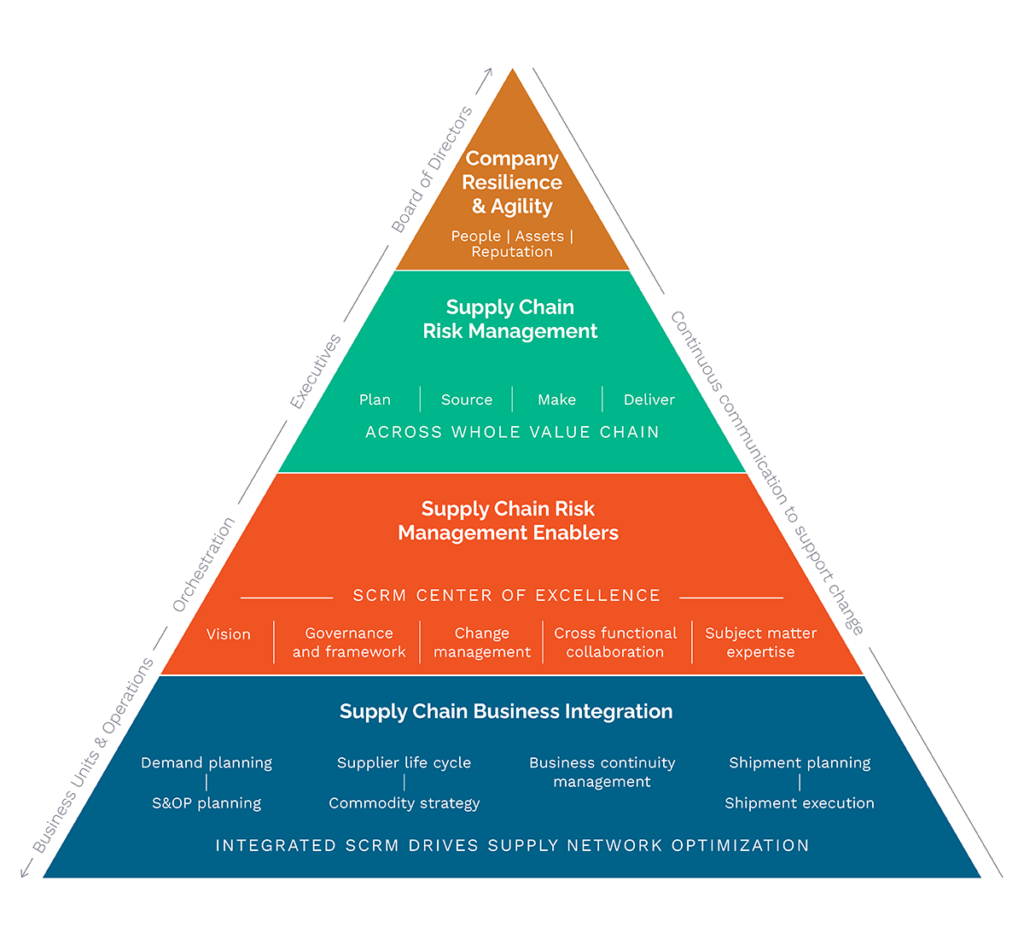As global supply chains become increasingly complex and interconnected, businesses must prioritize their risk management efforts to ensure business continuity and ultimately reduce financial risks. Supply chain visibility is a critical component of risk management, enabling stakeholders to access real-time data and identify potential disruptions early on.
A risk management strategy should be a key part of any business’s supply chain management. This means understanding the potential risks involved in each stage of the supply chain and mapping the supply chain for better visibility. Utilizing AI-based technologies can help companies monitor and manage risk in all parts of the supply chain. At a tactical level such risk management supports the identification of potential disruptions and an early response plan.
Here, we list seven key tactics for improving supply chain visibility and enhancing risk management.
1. Utilize advanced digital platforms and AI-based tools
Advanced digital platforms and artificial intelligence (AI) can help with relevant data collection and management across various stages, eliminating logistic, sourcing, or planning issues. These tools can automate the collection, management, and analysis of data and provide real-time visibility across the entire supply chain, even down to the sub-tiers. This technology enables businesses to quickly identify and respond to potential disruptions and improves supply chain resilience.

Figure 1: AI-based risk-management platforms offer multiple ways to improve supply chain visibility, including dashboards that can integrate with existing management software.
2. Work with reliable suppliers
Building strong relationships with suppliers can encourage open communication , which is important as supplier validation is a critical element of enhancing supply chain visibility. Businesses should work with reliable suppliers who provide accurate data on their facilities’ location and status. This cooperation creates transparent and reliable supply chains, making it easier to track the movement of goods through the supply network. Additionally, businesses can work with suppliers to develop disaster contingency plans, minimizing the impact of disruptions on both entities.
3. Invest in training and skill development
It is critical to invest in the training and skill development of employees who manage and operate the supply chain. Digital platforms and AI-based tools are only as effective as the people using them, so ensuring that your team has the necessary skills to utilize these tools effectively is crucial. Training programs should focus on understanding the technological infrastructure, interpreting data, and adopting agile and proactive response strategies. Fostering a culture of continuous learning can also encourage employees to keep up to date with the latest supply chain technologies, strategies, and best practices.
4. Promote a culture of transparency and accountability
For a truly visible supply chain, cultivating a culture of transparency and accountability is essential. This involves open communication about processes, challenges, successes, and failures across all levels of the organization. By doing so, potential issues can be identified and rectified before they escalate into larger problems. This culture also promotes accountability, ensuring every stakeholder takes responsibility for their role in the supply chain. Moreover, it fosters a sense of collective ownership and collaboration, which can be instrumental in quickly resolving disruptions and maintaining business continuity.

Figure 2: Building a culture to promote accountability for supply chain risks is a top-down and bottom-up approach connected through a central function to enable it: a supply chain Center of Excellence.
5. Enhance material flow visibility
Material flow visibility combines supplier networks with a company’s own procurement and bill-of-materials data to lay out the entire journey of materials – from their origin at the supplier’s end, through various stages of processing and manufacturing, up until the final product reaches the end user. Advanced analytics can be applied to this data to identify patterns, predict potential disruptions, and optimize material flow. It supports supply chain sustainability, regulatory compliance, and risk scoring initiatives. Businesses can then make data-driven decisions and anticipate potential disruptions that might affect the flow.
6. Implement a logistics visibility program
Logistics visibility using GPS and RFID technologies can provide real-time information on the location and status of shipments, enabling companies to closely monitor their progress and promptly respond to any deviations or delays. A centralized digital platform can store and organize vast amounts of logistics data, making it easily accessible for review and analysis. Logistics visibility supports operational supply chain risk management by helping companies identify potential delivery delays and take appropriate mitigating actions. This program enhances real-time communication with key stakeholders and suppliers where they can be informed on the progress of any order or shipment.
7. Create information access for all stakeholders
Integrate modern technologies, such as cloud-based platforms, AI, and IoT, into existing platforms and dashboards to ensure visibility for all stakeholders. These technologies provide instantaneous access to real-time information about the supply chain’s status, enabling businesses to make informed decisions quickly. For instance, IoT sensors can track a product’s location or condition, while AI can analyze data to predict potential disruptions and suggest mitigating actions. Cloud-based platforms enable easy access to this information for all, fostering collaboration and swift response to any disruptions.
Ultimately, data is the lifeblood of modern supply chain visibility. Leading businesses leverage advanced analytics to translate raw data into actionable insights. Predictive analytics can forecast potential supply chain disruptions, while prescriptive analytics provides recommended actions to mitigate these risks. True visibility comes from understanding and interpreting data trends, which can highlight supply chain vulnerabilities. Businesses that can see these risks can address them proactively, saving both time and money.
To learn more about supply chain visibility for risk management, get our SCRM white paper.